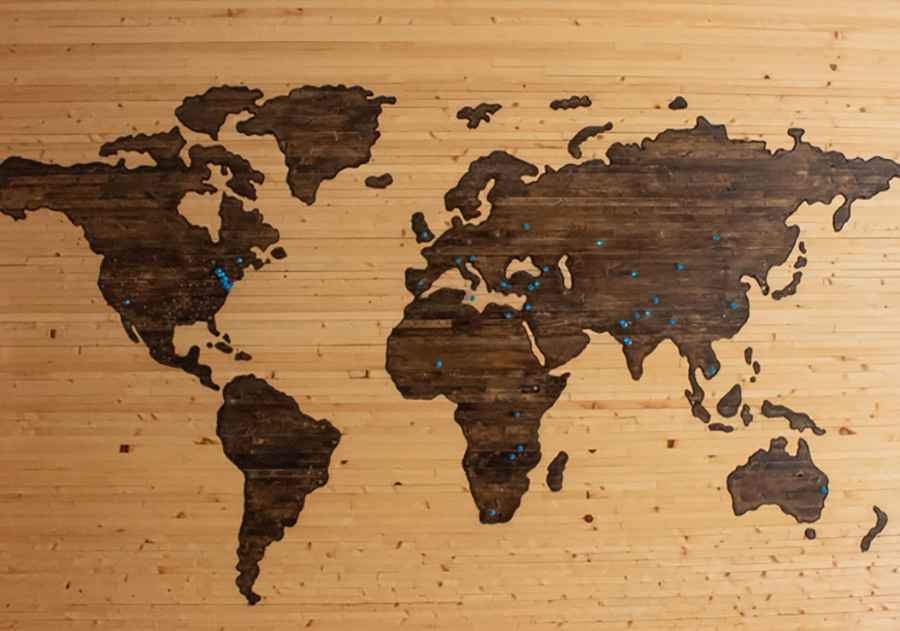How to Navigate the Roads of Connecticut?
Maps are amazing and have played an integral role in human civilization for thousands of years. They include the earliest cave paintings and the real-time digital maps people use today. With maps, people can better navigate, explore, and understand their surroundings. Let’s look at 10 reasons maps are so useful.

1. Navigation and Travel
Maps help people plan vacations and navigate their surroundings. For instance, the map of Connecticut can help tourists visualize various destinations throughout the state and plan where they would like to go. Historical maps of the state can also better aid tourists’ understanding of significant locations and events.
In general, maps are excellent guides as people plan cross-country road trips or even a dash through the airport. GPS-enabled digital platforms such as Apple Maps and Google Maps offer real-time information on routes, points of interest, and traffic conditions, making travelers’ journeys more efficient and enjoyable.
2. Cultural Preservation and Tourism
Maps document historical sites, cultural landmarks, and heritage trails. They do the following:
- Provide context to historical events
- Enhance the visitor experience
- Showcase cultural diversity and promote inclusivity and recognition of Indigenous communities
- Guide tourists to significant locations
For example, a single zoo can have multiple maps to show where exhibits, bathrooms, eateries, and much more are located or show them all in one map. The maps can be paper, digital, or accessible for various needs (such as a Braille or sensory map). The maps can also be in various languages.
3. City Planning and Development
Maps help city planners analyze land use and set up transportation networks. Planners can also identify good locations for housing, offices and other commercial areas, and public amenities.
4. Emergency Response and Disaster Management
Maps are invaluable during a crisis. For example, they help first responders reach emergency scenes as quickly as possible. In natural disasters and public health emergencies, maps help officials identify affected areas, plan evacuation routes, and allocate resources.
Authorities can also overlay different maps or data points relating to population density, infrastructure, vulnerability, and other factors. This lets them minimize damage and boost the efficiency of relief efforts.
5. Environmental Conservation
Maps enable scientists and researchers to study ecosystems, track wildlife habitats, and monitor the impacts of climate change. Maps also help identify areas of conservation importance. They can guide land-use planning and support efforts to protect biodiversity and preserve natural resources. Maps can also aid people in visualizing the distribution of minerals, water sources, and energy reserves. That helps with sustainable resource management.
6. Business and Market Analysis
Maps are vital for businesses and market analysis. For example, retailers use demographic maps to identify potential customer bases and determine ideal locations for stores. Franchisors use maps to determine profitable locations for franchisees.
Market analysts overlay data on consumer behavior, income levels, and competitors to understand market dynamics and make informed business decisions. Maps also provide visual insights into consumer patterns, trade routes, and economic trends. That helps companies plan strategically and expand smarter.
7. Adventure and Exploration
Maps let people exercise more efficiently, and without maps, people would not be able to explore as fully as they do. Maps enable adventurers to trek through dense jungles, climb towering mountains, and sail across open oceans.
They help people have a sense of direction and purpose when they embark on new journeys. Maps can inspire curiosity and adventure.
8. Community Engagement and Participation
Maps promote community engagement and citizen participation. They enable residents to collaborate with policymakers, advocate for their needs, and shape the development of their neighborhoods.
People can make very specific maps for community events such as a 5k run or fundraiser, too, and that increases community participation and makes events go much more smoothly.
9. Geolocation and Location-Based Services
Mobile technology and geolocation services have transformed the way people interact with maps. People can easily find nearby restaurants and services and track their fitness activities. Mapping technology can offer alternative routes if traffic is bad on the route up ahead, too.
10. Education
Maps can bring history and facts to life. For example, a map can show how many countries other than the United States don’t use the metric system. It can show how many countries Britain has invaded, the most popular last names in Europe, the rates of alcohol consumption around the world, and the rivers that flow into the Mississippi River (and some of these maps can be animated). They help kids and adults alike connect to their world in a way that pictures, graphs, tables, and text do not.
Maps are far more than simple tools for directions (though a few are sometimes just that). Maps have the power to shape people’s understanding of the world, aid in decision-making, and contribute to the overall well-being of individuals and communities. People use them to walk through zoos, plan trips or adventures, facilitate navigation, do urban planning, support emergency response, and much more.